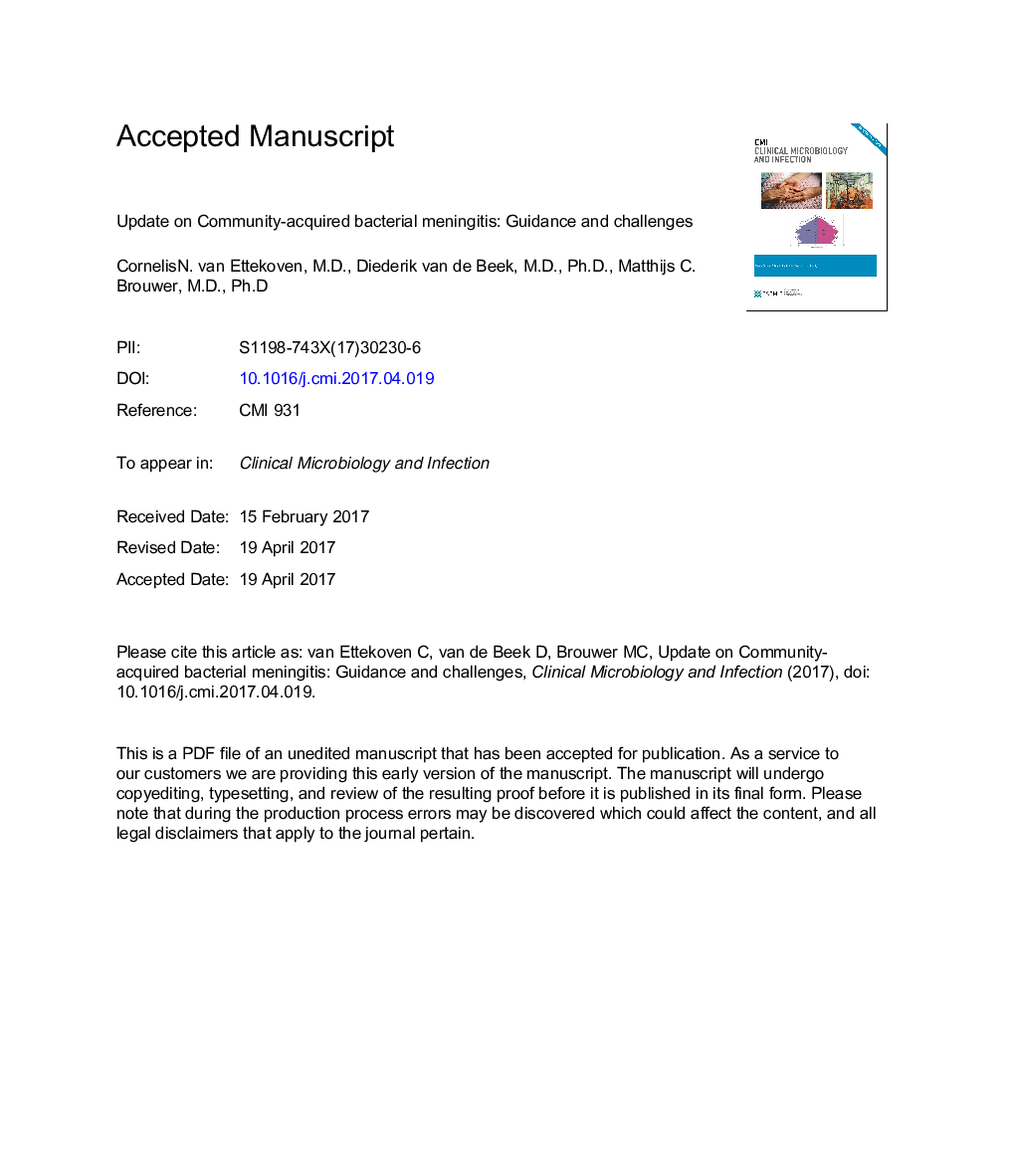| Article ID | Journal | Published Year | Pages | File Type |
|---|---|---|---|---|
| 5671603 | Clinical Microbiology and Infection | 2017 | 22 Pages |
Abstract
The incidence of bacterial meningitis has decreased following pneumococcal and meningococcal conjugate vaccine introduction. In the diagnosis of bacterial meningitis the clinical characteristics and laboratory parameters are of limited diagnostic accuracy and therefore cerebrospinal fluid analysis remains the principal contributor to the final diagnosis. The ESCMID guideline advises to start empiric treatment within one hour of arrival in all suspected meningitis cases, and choice of antibiotics needs to be differentiated according to the patient's age, risk factors, and local resistance rates of pneumococci. Dexamethasone is the only proven adjunctive treatment and should be started together with the antibiotics. The follow-up of surviving patients should include evaluation for hearing loss and pneumococcal vaccination to prevent recurrences. Future perspectives include further development and implementation of vaccines, and new treatments aimed at further reducing the inflammatory response. Studies on implementation of the new guideline should determine adherence and evaluate whether improved prognosis can be achieved by following protocolled management strategies.
Keywords
Related Topics
Life Sciences
Immunology and Microbiology
Microbiology
Authors
C.N. van Ettekoven, D. van de Beek, M.C. Brouwer,
